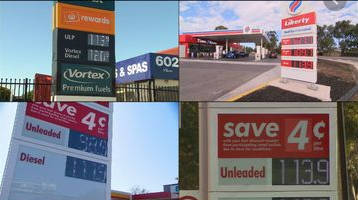Can you remember when the idea of being Australian was synonymous with a single petrol brand? Or when a “servo” was an actual “service” station, where people in overalls would rush out to fill your car for you, and wash your windscreen, while you sat there, devoid of the temptation to shop for chocolates and fizzy drinks?
Well, you must be old. But there is a strangely strong connection between motorists and oil-company brands – most notably the “Australian as” Ampol, which disappeared 25 years ago when it was eaten by Caltex. Interestingly, Ampol is making a comeback in 2020, with Caltex announcing it has begun the process of transitioning back to the original “much-loved and iconic” brand over the next three years.
You might also get a warm glow of familiarity looking at the green and gold BP logo, because it’s been one of our biggest for decades, but it actually stands for British Petroleum, of course.
And then there are all those people who still go ga-ga over Golden Fleece signs, for some reason, and have made them into collectables.
The modern fuel market is very different, of course, as service stations have become more like shops with convenient bowsers outside. That shift to supplementary shopping has been both mirrored and encouraged by the biggest Australian petrol brands of the day – Coles and Woolworths.
So which are the biggest and best brands in Australia today, and do we actually shop between them, or just stick with the one we love?
As you might expect, price is the biggest factor, for most people. The ACCC’s recent report on petrol prices showed that prices vary considerably by retailer, and that price-sensitive consumers can make significant savings over time by choosing to buy cheaper.
For other consumers, however, “the price of petrol is not as important a factor in their decision about where to buy fuel,” the ACCC reports.
“These consumers may prefer to purchase petrol from retailers that they consider to be in convenient locations, have superior convenience-store offerings or offer loyalty schemes (such as frequent flyer points).
“These consumers can still benefit from having a wider range of retailing operations to choose from, as retailers are likely to try to compete on non-fuel offerings to attract these consumers.”
According to Canstar Blue, 29 per cent of Australians fill up at the same service station, regardless of price, while 27 per cent would be prepared to drive further for cheaper fuel.
Here is our list of the top petrol brands in Australia, and how consumers rate them.
It turns out there is plenty of debate about which ones are bigger than others, and the order may well change, month by month, but these are ACCC figures.


